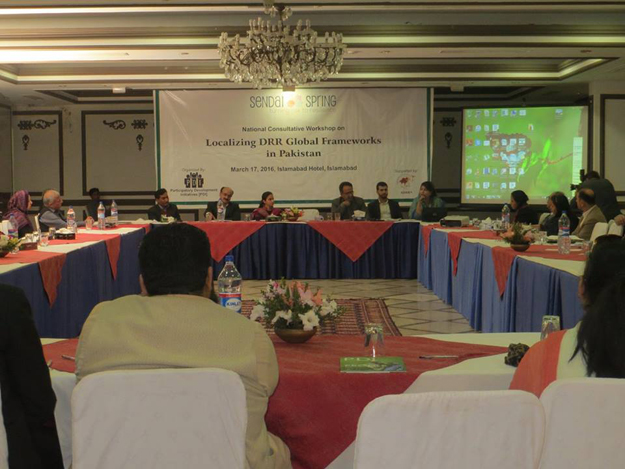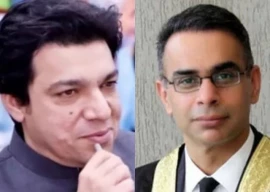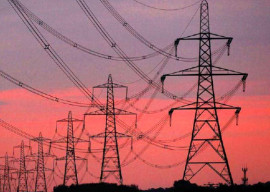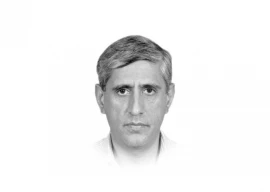
Experts at a workshop on Thursday stressed the need for a comprehensive plan to achieve the goals of disaster risk management.
They were speaking at the workshop focusing on localising disaster-risk reduction global frameworks jointly organised by the Participatory Development Initiatives (PDI) and the Asian Disaster Risk Reduction Network (ADRRN).
The Sendai Framework for Disaster Risk Reduction (2015-2030) is a 15-year voluntary, non-binding agreement which recognises that the state has the primary role to reduce disaster risk but that responsibility should be shared with other stakeholders including local government, the private sector and other stakeholders.
The PDI Executive Director, Sikander Brohi, said that 82,802 people had lost their lives — the largest number of deaths in the region — as a result of different disasters in Pakistan from 2005 to 2014 while 49,784,339 people were affected during the same period.
“Disaster management systems at federal and provincial levels have failed in preventing or minimising disaster losses due to overlapping of the roles and responsibilities, and low priority and low budget for disaster management in Pakistan,” he said.
The World Population Foundation (WPF) Country Representative, Qadeer Baig said that disasters would increase in intensity, therefore the government and civil society should come up with strong disaster management efforts.

“Pakistan has achieved partial success in achieving sustainable development goals but there is still a lot to be done for its true implementation. The problem is economic disparity; either people have too much money or are unable to make ends meet,” he said.
Baig said that when a disaster hits pregnant women suffer the most.
“This is because proper treatment and facilities don’t get to rural areas whenever disaster hits, which makes the situation even worse. Reproductive rights are linked to everyone in the community, not just a particular section,” he said.
National Humanitarian Network (NHN) Manager GR Baloch said that Pakistan was seriously vulnerable to various kinds of disasters.
“The world is facing humanitarian needs on a massive scale; 88 million people are in need of humanitarian aid. 60 million people are forced away from their homes. 250 million people in 37 countries are affected by conflicts and natural disasters,” he said.
Baloch further said that Pakistan needed to strengthen local government so as to effectively ameliorate disaster risks.
Nazima Shaheen from ActionAid said that disaster risk reduction must be linked with issues of women empowerment. “Disaster risk reduction and relief efforts should be considered key human rights,” she said.
Shaheen highlighted the significance of involving youth in disaster risk reduction and response efforts.
Other workshop participants stressed the need for strengthening and making communities resilient, finding inclusive approaches for vulnerable groups and special training of handicapped persons.
On Agenda
Seven global targets
(a) Substantially reduce global disaster mortality by 2030.
(b) Substantially reduce the number of affected people globally by 2030.
(c) Reduce direct disaster economic loss in relation to the global gross domestic product by 2030.
(d) Substantially reduce disaster damage to critical infrastructure and disruption of basic services, among them health and educational facilities, including through developing their resilience by 2030.
(e) Substantially increase the number of countries with national and local disaster risk reduction strategies by 2020.
(f) Substantially enhance international cooperation to developing countries through adequate and sustainable support to complement their national actions for implementation of this Sendai Framework by 2030.
(g) Substantially increase the availability of and access to multi-hazard early warning systems and disaster risk information and assessments to the people by 2030.
Source: The United Nations Office for Disaster Risk Reduction
Published in The Express Tribune, March 18th, 2016.


















1715843823-0/WhatsApp-Image-2024-05-16-at-12-14-16-(1)1715843823-0-270x192.webp)







1683888120-0/image-(3)1683888120-0-270x192.webp)
1715752665-0/hazimpraise-(1)1715752665-0-270x192.webp)







COMMENTS
Comments are moderated and generally will be posted if they are on-topic and not abusive.
For more information, please see our Comments FAQ